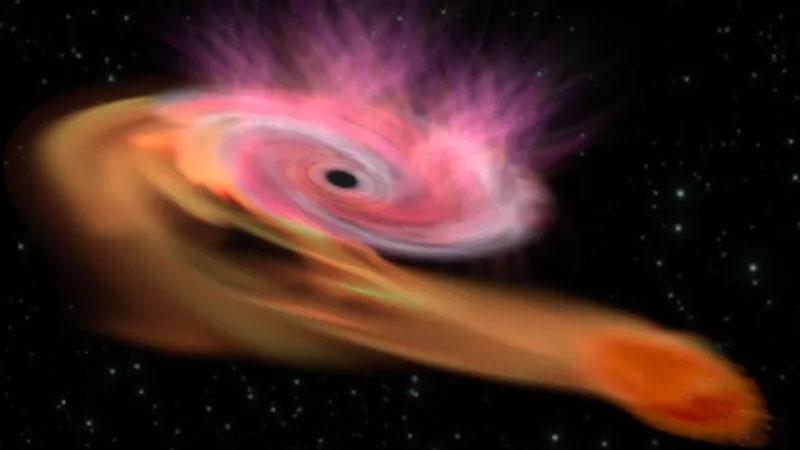Scientists have reported the largest tidal disruption in recorded history by a black hole of a very massive star. Hot on the heels of the explosion, it was mistaken for a supernova, although it burned at a distance of 9 billion light years. A detailed study of the phenomenon allowed us to draw a sensational conclusion – it was the death of the most massive star in the history of observations from the shackles of the gravity of a black hole.

An artistic representation of the tidal destruction of a star by a black hole. Image source: ESA/C. Carreau
The TDE AT2023vto event was incredibly exciting. It is no wonder that it was initially attributed to the supernova phenomenon. Subsequent analysis of the data and observation of the object in all available wavelengths showed that we are most likely dealing with the destruction of a star within the gravitational influence of a black hole. The calculations surprised scientists. For lunch, the black hole got a star nine times more massive than the Sun (9.1 masses). The black hole that committed this crime in the center of a distant galaxy was also quite large – 10 billion times more massive than our star.
So far, tidal disruption phenomena have spanned the mass range from 0.1 to 2 solar masses. Against this background, the TDE AT2023vto event recorded on September 9, 2023 became enormous in scale. For scientists, this is a real find – a laboratory experiment with new variables that could never be performed in an earthly laboratory. Therefore, the site of the phenomenon will continue to be monitored.
By the way, there is another reason to continue monitoring. The TDE AT2023vto event was not accompanied by the usual relativistic jet in such cases – a kind of belching of a black hole, the release of radiation and energy into space at subluminal speed. This happens when matter falls into a black hole. This makes TDE AT2023vto the most distant tidal disruption event detected without a jet or with a low-intensity jet, which makes the discovery doubly interesting.